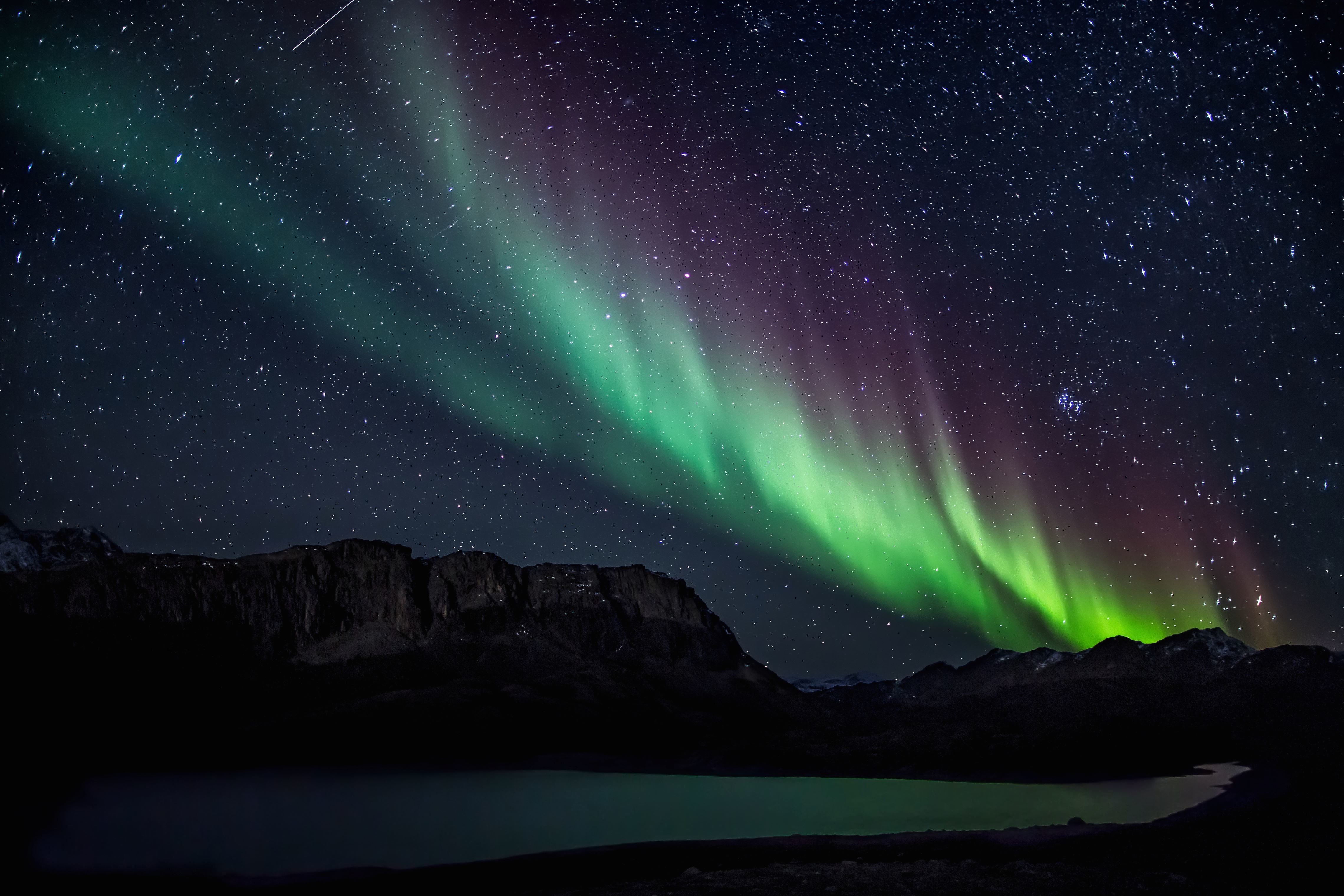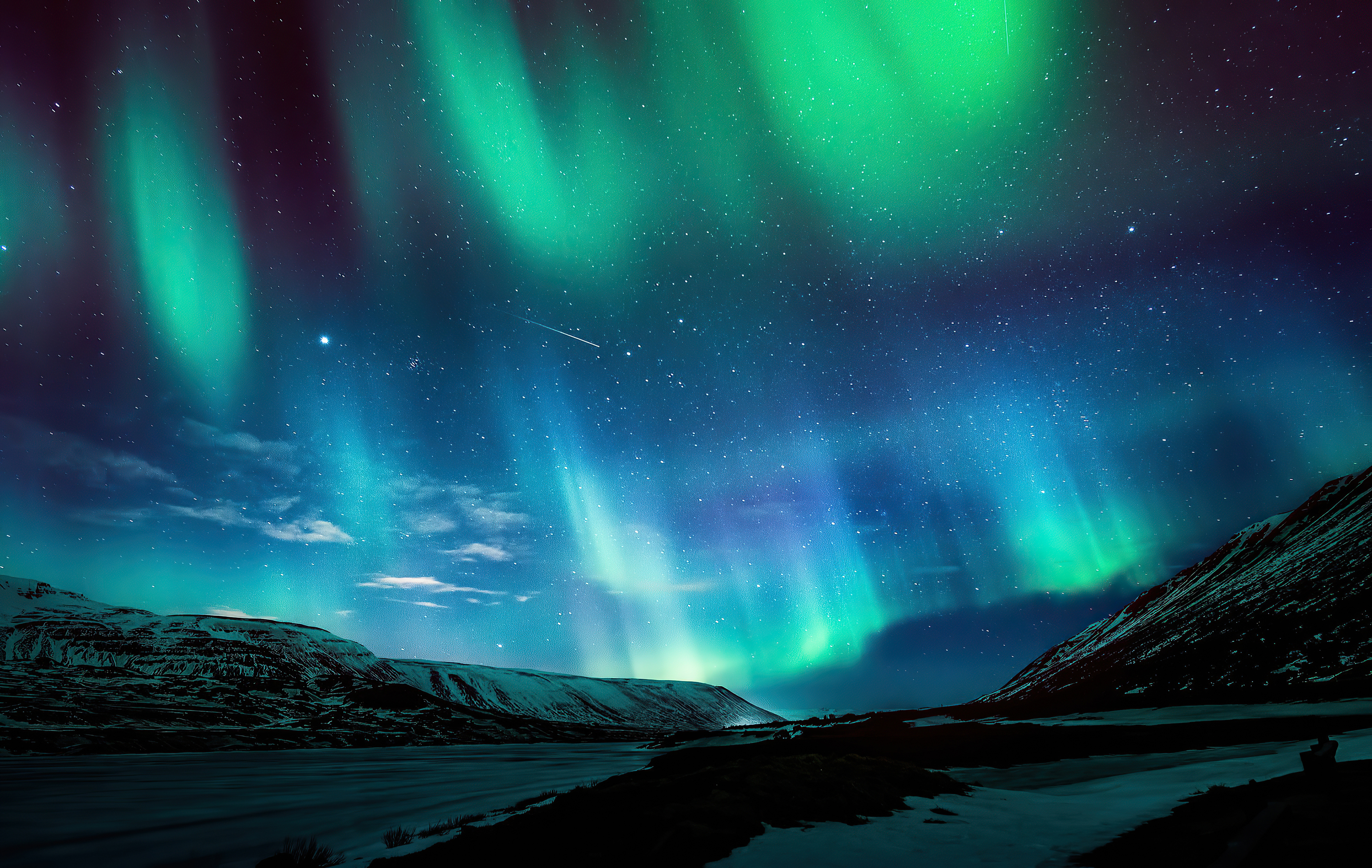Have you ever looked up at the night sky and wished for something truly out of this world to appear? Well, you know, for folks living in the northern parts of the United States, that wish can actually come true. We are talking about the northern lights, also called the aurora borealis. It's a natural light show, a pretty amazing sight that sometimes paints the sky with greens, pinks, and purples. This phenomenon, which is a bit like magic, is something many people hope to see at least once in their lives. It's truly a spectacular display.
This page is going to give you some helpful pointers, you know, about when and where you might catch a glimpse of these incredible lights. It’s not always a sure thing, but with a little bit of planning and some good timing, your chances go way up. We’ll look at what makes these lights appear, and how you can get a good idea of when they might be visible right over your head. It’s pretty cool, if you ask me, how nature puts on such a show.
You see, the aurora borealis, the northern lights, is one of nature's most spectacular displays, as a matter of fact. For those of us in the northern states, these lights are likely to appear, especially during certain times. We'll explore the science behind it, like the way the sun plays a part, and how that affects what we see down here. It’s really quite fascinating, and with some basic information, you can be ready for when they next make an appearance.
Table of Contents
- What Are the Northern Lights, Anyway?
- Why Do We See Aurora Borealis in the Northern U.S.?
- When is the Best Time to See the Aurora Borealis in the Northern U.S.?
- Where Should You Look for the Aurora Borealis in the Northern U.S.?
- How Do We Predict the Aurora Borealis in the Northern U.S.?
- Getting Ready for the Aurora Borealis in the Northern U.S.
- Capturing the Aurora Borealis in the Northern U.S.
- The Experience of Seeing the Aurora Borealis in the Northern U.S.
What Are the Northern Lights, Anyway?
The northern lights, you know, the aurora borealis, are a truly stunning sight. They are one of nature's most spectacular displays, truly. So, what exactly causes these shimmering colors in the night sky? Well, it all starts with our sun. The sun, as a matter of fact, is always sending out tiny bits of itself, charged particles, into space. These particles travel very, very fast. When they reach Earth, they meet our planet's protective magnetic field. This field, it's almost like a shield around us.
When these charged particles from the sun hit Earth's magnetic field, they cause a bit of a disturbance. It's like, you know, when something bumps into something else and causes a ripple. These disturbances are what lead to the auroras. The particles get pulled towards the Earth's magnetic poles, both the north and the south. As they get closer, they crash into gases in our atmosphere. These gases, like oxygen and nitrogen, are what we breathe every day.
When these solar particles collide with the atmospheric gases, they give off light. Different gases give off different colors, which is pretty neat. Oxygen, for example, often makes the sky glow with a greenish-yellow light, which is what we see most often. Nitrogen, on the other hand, can create purples and reds. The strength of the solar wind, how fast those particles are moving, can really affect how bright and how colorful the display is. So, in some respects, it’s a cosmic light show, powered by our sun.
Why Do We See Aurora Borealis in the Northern U.S.?
The reason we get to see the aurora borealis in the northern U.S. is directly related to how those charged particles from the sun interact with Earth’s magnetic field. You see, the magnetic field lines tend to funnel these particles toward the poles. So, places closer to the magnetic north pole naturally have a better chance of seeing the lights. This means states like Michigan, Minnesota, Wisconsin, and even parts of Maine or Washington can be prime viewing spots, given the right conditions, of course.
The activity from the sun, like enhanced speeds of solar wind from coronal holes and coronal mass ejections, plays a big part. These events on the sun send out more particles, or particles that are moving faster. When these energetic bursts reach Earth, they cause bigger disturbances in our magnetosphere. A bigger disturbance means a stronger aurora. And a stronger aurora means it can be seen from places that are a bit further away from the magnetic pole, which includes much of the northern U.S., actually.
It's all about the strength of the solar event and where you are located on the planet. The further south you are, the more intense the solar activity needs to be for you to catch a glimpse. But for those in the northern states, the aurora borealis is likely to appear more often, especially when the sun is putting on a good show. This is why, you know, folks in places like Wisconsin might get a chance to see these lights more frequently than someone in, say, Florida. It's pretty much geography and space weather working together.
When is the Best Time to See the Aurora Borealis in the Northern U.S.?
Figuring out the best time to see the aurora borealis in the northern U.S. involves a couple of things. First off, it's about the time of night. The agency that studies these things, you know, often says the northern lights are best seen between 10 p.m. local time and about 2 a.m. This is typically when the sky is at its darkest, and the Earth's rotation puts your location in a good spot relative to the aurora oval. So, if you're planning to look, that's your prime window, really.
Then there's the time of year. While auroras can happen any time, they are often more visible during the colder, darker months. This is because the nights are longer, giving you more hours of darkness to look up. Also, the solar activity that causes auroras tends to follow an eleven-year cycle, with peaks of activity. So, during those peak years, you might see them more often. It’s not an exact science, but it gives you a general idea of when to keep an eye out, you know.
And of course, the weather plays a huge role. If it’s cloudy, you won’t see a thing, no matter how strong the aurora is. Clear skies are absolutely key. So, you need to check the weather forecast for your area. A crisp, clear night, especially after a cold front has passed through, can be perfect for viewing. You really need all these pieces to line up for the best chance to witness the aurora borealis in the northern U.S., which is kind of how it works.
Where Should You Look for the Aurora Borealis in the Northern U.S.?
When you are trying to find the best locations to see the northern lights, also known as the aurora borealis, in the northern U.S., you need to think about a few things. First, and this is pretty basic, you need to get away from city lights. Light pollution from towns and cities makes the sky too bright, washing out the fainter glows of the aurora. So, heading out to a rural area, somewhere dark, is your first step. A place with wide-open views to the north is even better, obviously.
Many northern states have parks or open areas that are far from major population centers. These spots are often ideal. Think about places like state parks or national forests. The key is to find a spot where you can see the horizon clearly, especially towards the north. This is where the aurora typically appears first and brightest. You might even use an interactive map to discover the best locations to see the northern lights tonight, as some services provide this, you know.
For instance, if you are in Wisconsin, getting away from the bigger cities like Milwaukee or Madison and heading north or west into more sparsely populated areas would be a good plan. Lakeshores, especially on the Great Lakes, can offer wide, unobstructed views. The goal is to minimize anything that blocks your view or adds light to the sky. A high point, like a hill, can also help, giving you a broader outlook. It’s about finding that truly dark spot, you know, that really helps.
How Do We Predict the Aurora Borealis in the Northern U.S.?
Predicting when and where you can see the aurora borealis in the northern U.S. is a bit like predicting weather, but for space. It’s not always exact, but we have some pretty good tools. The core of these predictions comes from keeping an eye on the sun. Auroras are the result of disturbances in the Earth's magnetosphere, which are caused by those enhanced speeds of solar wind from coronal holes and coronal mass ejections. So, watching the sun is the first step, really.
Agencies like NASA use satellites, like their DSCOVR and ACE satellites, to monitor these solar events. These satellites sit out in space, watching for solar winds and solar flares heading our way. When they detect something significant, they can give us a heads-up. The exact details about when and where aurora will become visible will be updated based on what these satellites report. This information is then used to create predictions of the aurora’s visibility tonight and tomorrow night, over North America, for instance.
These predictions usually come in the form of a Kp-index, which is a scale that tells you how strong the geomagnetic activity is. A higher Kp-index means a stronger aurora and a better chance of seeing it from lower latitudes, like the northern U.S. So, if you see a prediction for a Kp of 5 or higher, that’s when you should really start paying attention. It’s about being informed and ready, you know, when those solar particles decide to put on a show for us.
Getting Ready for the Aurora Borealis in the Northern U.S.
Once you have a good idea that the aurora borealis might be visible in the northern U.S., getting ready is the next step. First, dress warmly, very warmly. Even if it's not freezing when you leave the house, standing outside for a while in the dark, especially in northern climates, can get very cold. Layers are always a good idea, and don't forget hats, gloves, and warm boots. You'll be standing still, so you'll feel the cold more, you know.
Bring a comfortable chair or a blanket to sit on. You might be waiting for a bit, and being comfortable makes the experience much more enjoyable. A thermos with a warm drink, like hot chocolate or tea, can also make a big difference. It's about being prepared for a potentially long wait in the dark. A red-light flashlight is also helpful. Red light helps preserve your night vision, which is pretty important for seeing faint auroras. White light will make your eyes adjust all over again, you know.
Also, tell someone where you are going, especially if you are heading to a remote spot. It's always good to have someone know your plans. Make sure your car has enough gas, and maybe bring some snacks. Being prepared means you can focus on the sky and not worry about discomfort or minor issues. It’s about setting yourself up for the best possible viewing experience of the aurora borealis in the northern U.S., which is pretty cool.
Capturing the Aurora Borealis in the Northern U.S.
If you're hoping to take pictures of the aurora borealis in the northern U.S., you'll need a camera that can handle low light. A smartphone might work for very strong displays, but a camera with manual settings, like a DSLR or mirrorless camera, will give you much better results. You'll want to use a wide-angle lens, something that can capture a lot of the sky. This is because the aurora can stretch across a large area, so you want to get as much of it in your frame as possible, you know.
A sturdy tripod is absolutely essential. You'll be taking long exposure shots, meaning the camera shutter stays open for several seconds, or even longer. Any movement during that time will make your photos blurry. So, a solid tripod will keep your camera steady. You'll also want to use a remote shutter release or your camera's timer function to avoid shaking the camera when you press the button. This is just a little trick that helps a lot, actually.
Settings-wise, you'll generally want a high ISO (to make the sensor more sensitive to light), a wide-open aperture (the lowest f-number your lens has), and a long shutter speed (anywhere from 5 to 30 seconds, depending on the aurora's brightness). It takes some experimenting, but with a little practice, you can capture some truly stunning images of the northern lights. Remember to focus manually to infinity, as autofocus usually struggles in the dark. It’s pretty rewarding to get those shots, you know, of the aurora borealis in the northern U.S.
The Experience of Seeing the Aurora Borealis in the Northern U.S.
Seeing the aurora borealis in the northern U.S. is an experience that stays with you. It's not just about the lights; it's about the whole atmosphere. Imagine standing out in the quiet, dark night, with only the stars for company. Then, slowly, a faint glow appears on the horizon. It might look like a pale green cloud at first. But then, it begins to move, to dance. It can be quite subtle, or it can be incredibly dramatic, filling the entire sky, you know.
The colors can shift and change, from soft greens to vibrant pinks and purples, sometimes even reds. It feels like the sky itself is alive, performing a silent ballet just for you. People often describe it as feeling very small, yet completely connected to something much bigger than themselves. It’s a moment of wonder, a truly humbling sight. The sheer scale and beauty of it are really something else, honestly.
For those in the northern states, the aurora borealis, or northern lights, are likely to appear this week, according to the predictions. If you get the chance to witness it, take a moment to just soak it all in. Put down your camera for a bit and simply watch. The memory of seeing those lights dance across the sky will be something you carry with you for a very long time. It’s a natural wonder, and being able to experience it firsthand is a pretty special thing, you know, especially when it happens over the northern U.S.


